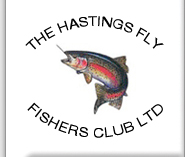Mayfly at Powdermill reservoir
Powdermill Reservoir has four mayfly species:
- Drake Mackerel Mayfly, Ephemera vulgata
- Siphlonurus aestivalis, a newly discovered summer mayfly species
- Pond Olive, Cloeon dipterum
- Anglers Curse, Caenis horaria
Drake Mackerel Mayfly
Ephemera vulgata is the crowning glory of Powdermill. The massive hatches of this mayfly give unparalleled fly fishing sport at the reservoir from the end of April through to June.
The species is a large fly and a close relation of Ephemera danica, ‘the’ mayfly of the Hampshire chalk streams. The nymphs of both take two years to grow to adults.
The nymphs use a couple of tusks on the front of their head to make a burrow in which they sit on the bottom of the lake or river. The tusks can be seen on the attached photo also the feathery gills which the nymphs use to force water through the burrow in part to feed on the organic debris it contains.
After two years the nymphs rise to the surface of the reservoir and hatch as duns, sub imagos. The duns fly to nearby bushes and trees where they hang upside down as the final stage the spinner, that is the imago emerges from the dun.
Male spinners gather in large swarms in the afternoon or early evening. The swarms dance up and down with the male’s extremely long tails stabilizing their flight. Female spinners attracted by the dance fly into the swarm. Males use their very long front legs to grab them and mate. Females then return to the reservoir to lay eggs completing the life cycle.
As you can see from the accompanying photo Drake Mackerel Mayfly adult fly have three tails which is an important distinguishing feature from the other large mayfly present at the reservoir; the summer mayfly Siphlonurus aestivalis which have two.
Trout feed on both the nymphs of vulgata and the adults. With the adults mostly trout rise to the duns, sub-imagos, as the fly hatch from the surface of the reservoir but they will also take the female spinners, imagos as they return to the reservoir to lay eggs.


Siphlonurus aestivalis – The Early Summer Mayfly
Siphlonurus aestivalis is a new addition to the British list of mayfly species. It is a large Summer Mayfly and has been known to exist in mainland Europe for over a century but until 2019 it was unrecorded in the British Isles. In that year a couple of nymphs were found in the Highlands of Scotland. Subsequent work including genetic analysis of specimens by the Natural History Museum in London confirmed the presence of aestivalis at three other locations in Britain including Darwell and Powdermill Reservoirs both of which have large populations of the mayfly.
As aestivalis was previously unknown in Britain it did not have a common name. In discussion with Craig Macadam, the country’s leading expert on mayfly it has been decided to call it the ‘Early Summer Mayfly’ because of the now four Summer Mayflies on the British list aestivalis hatches earliest in the year.
Powdermill then is blessed with not one but two large mayfly species; Ephemera vulgata the Drake Mackerel Mayfly and Siphlonurus aestivalis the Early Summer Mayfly. At a quick glance they may appear similar but there are significant differences between their preferred habitat, life cycle and anatomy.
Drake Mackerel Mayfly have feather like gills on the back of their body and live in a small tunnel it makes in the bottom of the reservoir whereas aestivalis has plate like gills which stick out from the side of the body and lives amongst underwater vegetation and weed.
Vulgata nymphs take two years to develop to adult fly but aestivalis only six months. Despite the time difference both species’ adults are large mayfly.
The colouration of both species adults is similar and both have large hindwings. There is one obvious difference however, the Early Summer Mayfly has two tails whereas the Drake Mackerel Mayfly has three.
The hatch periods of the species at Powdermill overlap. Possibly aestivalis starts a little earlier but is rapidly overwhelmed by the huge number of vulgata at the reservoir. There are large numbers of the Early Summer Mayfly at Powdermill but the numbers of the Drake Mackerel Mayfly are biblical!
The question comes to mind as to why the this Summer Mayfly was not noticed previously by Hastings Flyfishers. The answer is it was, at least at Darwell where it was called the Summer Dun. In 1970 none other than Richard Walker of Clarissa the Carp fame actually lodged specimens at the Natural History Museum albeit misidentified. Clearly then the Early Summer Mayfly is not a recent arrival at Darwell or for that matter Powdermill. It has probably been present ever since the reservoirs were formed.
Siphlonurus aestivalis must be a significant food resource for the trout and indeed the Rudd at Powdermill but how important it is to fly fishing remains to be established. I suspect it is an interesting addition to the club’s fauna but fishing wise the massive population of Ephemera vulgata is the vital element. Despite voicing this thought I have tasked an expert fly tying friend of mine, Peter Hayes to tie up some dry fly representations of the Early Summer Mayfly and will use them at the first sign of the natural fly at the reservoir. I will let the club know how I get on.


|






